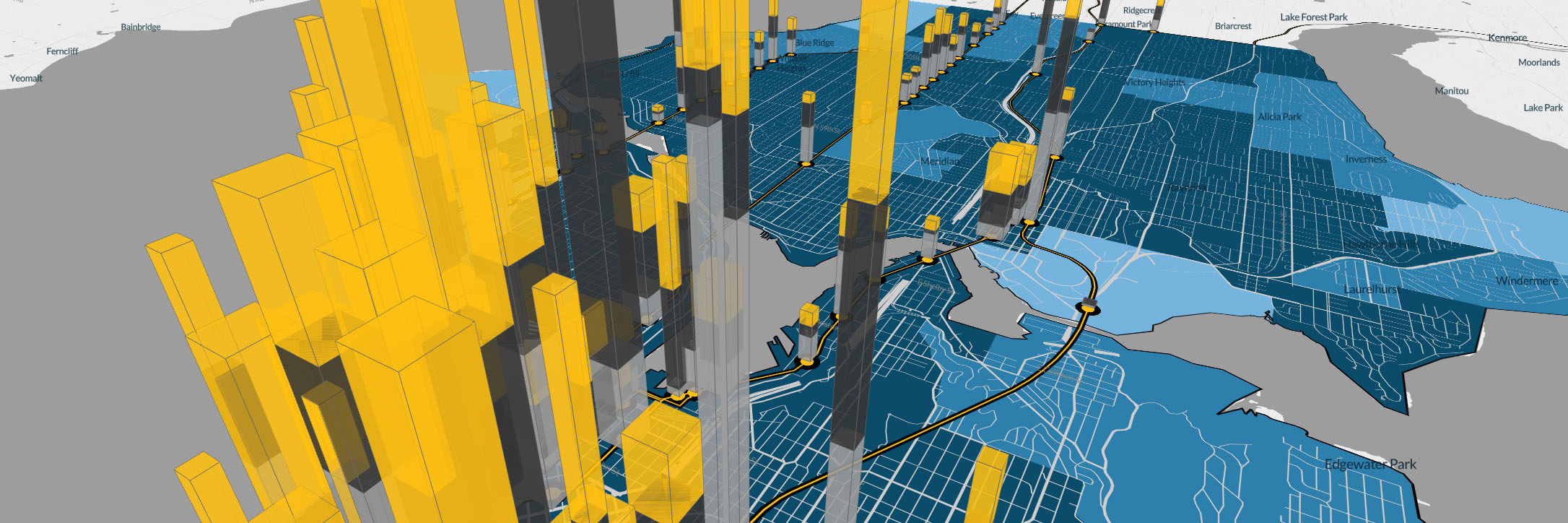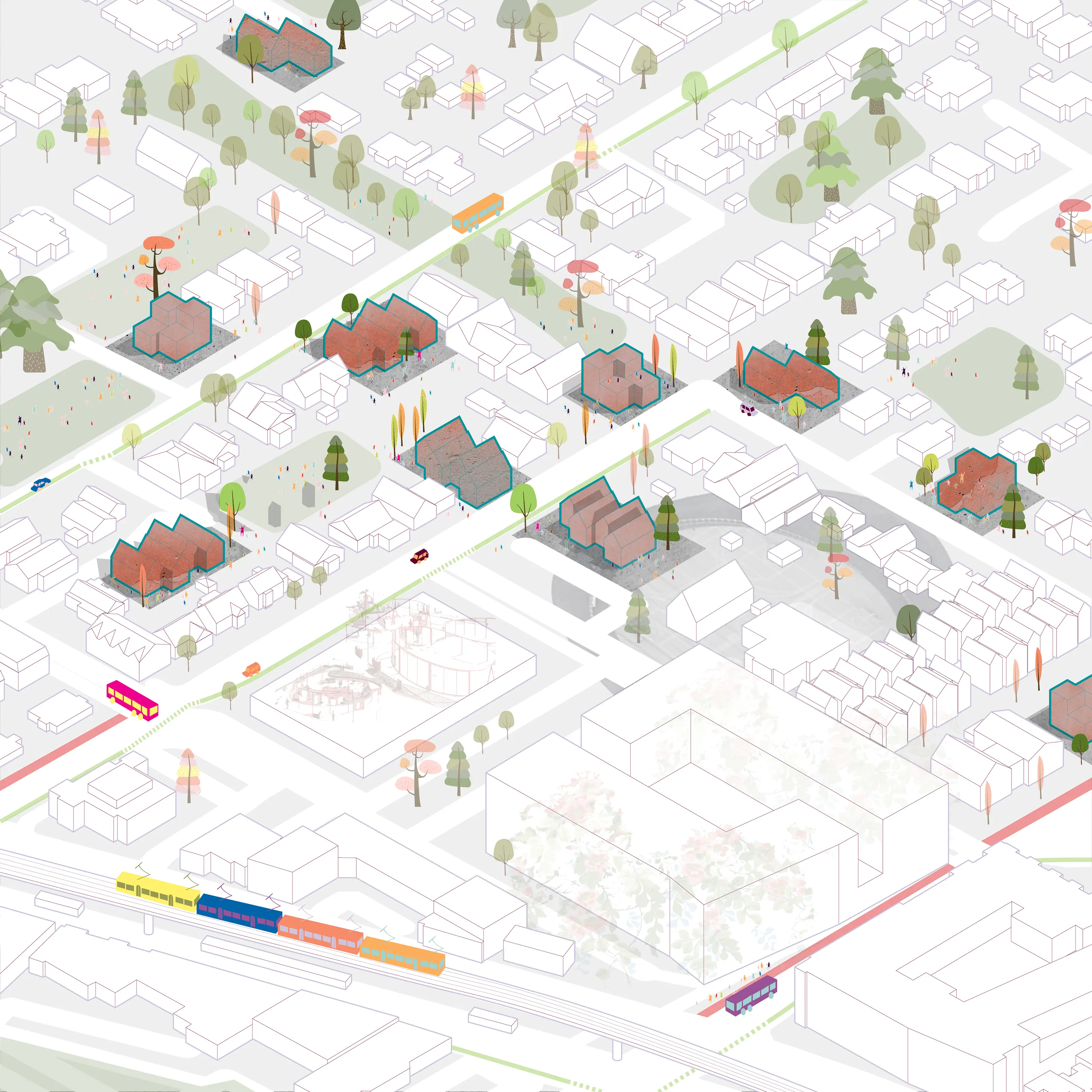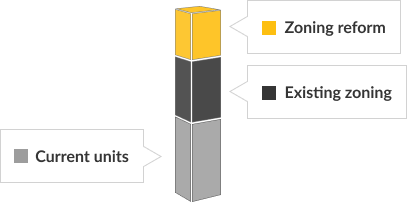
America Has a Housing Shortage. Zoning Changes Near Transit Could Help.
The United States has a housing affordability problem. The housing market has inadequate supply to meet the demands of a growing population, with an estimated shortage of 3.8 million houses for rent or sale in 2019. Zoning ordinances implemented by local governments sometimes hinder new development, contributing to rising home prices and ballooning rents nationwide.

Many cities use zoning rules to allow only single-family housing in some neighborhoods, which allocates a lot of buildable space to a small group of people. In many cities, it’s illegal to build anything other than a single-family home on more than 75 percent of the residential land.
As a result, cities tend to sprawl out horizontally, incentivizing car use, preventing the development of more affordable apartments, and diminishing the vibrancy of urban neighborhoods. In some neighborhoods, multifamily housing is allowed but only at lower densities than current construction, making redevelopment impossible.
But urban land can be used differently. By changing the zoning rules that dictate the number of units allowed on a lot, policymakers can encourage the construction of denser housing in their cities, incentivize demand for public transit, reduce pollution, and increase access to a variety of housing types.
Scroll to explore four zoning changes policymakers can pursue to address housing shortages, or click on the button below to explore these changes in the Puget Sound region through our interactive tool.
Each of these zoning changes offers a potential avenue for addressing local housing shortages. By prioritizing multifamily residences, policymakers can increase affordability, drive up demand for public transit, and create more livable areas filled with businesses, restaurants, and jobs just a short walk away.
Many cities across the nation are already exploring these types of changes in the face of continued obstacles to construction in the zoning code. In Washington, DC, 36 percent of residential land is zoned for single-family homes exclusively, and much of this land—such as the in-demand Northwest portion of the city—is within easy access of subway stations, making it ideal for denser construction. In 2021, DC passed a comprehensive plan for zoning reform, which seeks to increase the available housing density by 15 percent by 2025.
And in Washington state, a bill passed this spring that enacted plexified zoning for the entire Puget Sound region: up to six units per parcel in cities with 75,000 residents or more; up to four units in cities with 25,000 residents or more; and up to two units elsewhere, with the exception of some wealthier neighborhoods. Research shows that the change could allow for tens of thousands of new homes in an area that needs an additional million homes (PDF) to keep up with population growth.
But more changes are needed to address the full scope of the housing shortage. Policymakers can target zoning changes near public transit stations to encourage more affordable housing by decreasing future residents’ transportation costs. They can reduce costs even further by eliminating parking requirements for new developments.
Making these changes may raise concerns from residents. In Nashville for example, a recent redevelopment proposal would build 480 apartments on the site of an underutilized business center. But in a resident town hall, some locals noted their opposition because they felt the plans didn’t incorporate enough parking and feared more units would lead to more traffic. Evidence suggests that parking is routinely oversupplied because of zoning requirements—and that new development doesn’t have to lead to more traffic (PDF) if it is accompanied by robust transit options. In the DC area, new “Missing Middle” zoning has been met with resistance as a group of single-family homeowners have sued to block the change.
Below, we display how the four zoning changes we explored above could expand potential housing development near transit in the Puget Sound region—including Seattle and nearby cities. Although we use the Puget Sound region to illustrate the effects of these changes, similar policies could be applied in communities across the country.

If policymakers enacted the
About
This interactive tool’s underlying data were developed in association with the Urban Institute report Making Room for Housing Near Transit: Zoning’s Promise and Barriers, published in January 2023. That report details the methods used to develop the data used in this tool.
To visualize the current and planned transit stations and transit lines, we leveraged data from Transit Explorer, pulling location data for fixed-guideway stations, which are defined as stations served by bus or rapid transit routes.
For each transit station and its encompassing locality (either municipality or unincorporated county area), we made a series of estimates. We used property-level data assembled from First American Financial Corporation to identify the number of actual housing units (as of 2022) located on parcels within a half-mile, straight-line distance of fixed-guideway transit stations. We did not include parcels with lot sizes of 62,500 square feet or more. We then conducted a series of calculations to assess the number of housing units that could be built on each of these parcels under current zoning requirements and with potential zoning changes. We made these estimates based on zoning data that we assembled from 39 jurisdictions in the Puget Sound region.
We considered four zoning changes. The “Plexify” reform would allow up to four-flat units on lots that currently allow only the construction of single-family residential homes. The “Missing Middle” reform would allow up to 12 units per lot on lots that now allow the construction of 3 to 11 units. The “Multiply” reform would double the allowed density of housing units on all lots within a quarter mile of transit stations. And the “Legalize” reform would allow large-scale multifamily residential buildings on lots where only commercial, retail, or public uses are currently allowed to be built.
The background of the maps displays demographic or other neighborhood data at the Census tract scale. These data have been drawn from the 2016–20 US Census American Community Survey 5-year database; the 2019 Census Longitudinal Employer–Household Dynamics database; the 2021 Puget Sound Regional Council’s database of housing; and the 2022 National Housing Preservation Database.
Project Credits
This data tool was funded by a grant from Amazon. We are grateful to them and to all our funders, who make it possible for Urban to advance its mission. The views expressed are those of the authors and should not be attributed to the Urban Institute, its trustees, or its funders. Funders do not determine research findings or the insights and recommendations of our experts. More information on our funding principles is available here. Read our terms of service here.
- research Yonah Freemark, Lydia Lo, Olivia Fiol, Gabe Samuels, Andrew Trueblood
- design Christina Baird
- development Jeff MacInnes (Decimal Point Studio)
- illustration To Be Done Studio (To Be Done Studio)
- editing Lauren Lastowka
- writing Wesley Jenkins
View the project on Github.